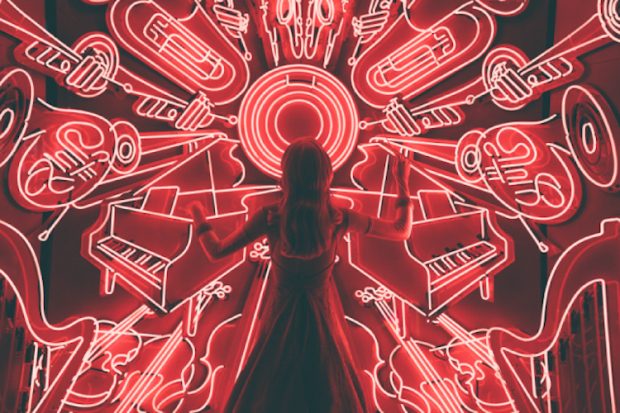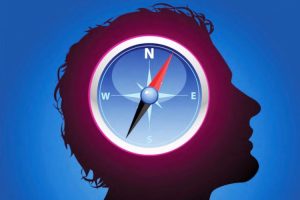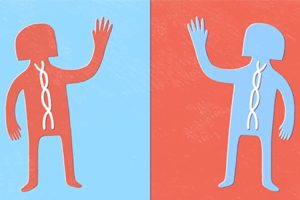Brain’s Navigational System
Neuroscientist Freyja Ólafsdóttir on the hippocampus, place cells, and the cognitive map
Our record of our own personal experience is a crucial component of who we are, and defines in many ways how we see ourselves. This has come to be called episodic memory – our memory for our own personal experience. Over the last five or six decades we’ve begun to understand in increasing detail how episodic memory depends on the brain, and how the mechanisms in the brain allow us to remember what has happened to us.
This research had a great step forward in the 1950s, when Brenda Milner was studying patient Henry Molaison, after known as patient H.M., who had developed complete amnesia, following surgery to cure his intractable epilepsy, which removed parts of both of his hippocampi. The hippocampus is part of the brain in the middle of the temporal lobes, in here, which it’s often tends to be the focus for epilepsy. William Scoville, the neurosurgeon had removed the anterior part of both of his hippocampi to cure epilepsy.
The operation was successful in terms of treating the epilepsy, but, as Brenda Milner found out, he seemed to have lost all ability to form new memories. In fact, he had lost his ability to remember what had happened to him prior to the surgery going back many years. She referred to this loss of memory simply as loss of memory what the man in the street would call memory – the ability to remember what has happened to you.
We knew from Brenda Milner’s work that episodic memory depends on the hippocampus. Over the years we’ve begun to make some progress in understanding what it is that happens in the brain, that enables episodic memory or this ability to re-experience what has happened to us in the past.
Much work, also concerning the hippocampus as it happened from neuroscientist in the early 1970s Tim Bliss and Terje Lomo, were interested in the electrical connections between neurons or the synaptic connections between neurons, which allow them to send little electrical signals to each other. It turned out – as had been predicted by Santiago Ramón y Cajal at the turn of the last century and Donald Hebb in around the 1950s – that if two neurons are both sending little electrical signals, and they have a connection between them, and this connection can get stronger. This is the ultimate basis of our ability to remember things.
If experiences are represented in the brain by these neurons sending little electrical signals to each other, then the pattern of activity across the neurons for a given event, perhaps when you’re eating your lunch the other day, that can be captured by strengthening the connections between all of the neurons that were active. In the sense that, if those connections have been strengthened now, at a later date, if I reactivate some of those neurons, perhaps by reminding you of the name of the person that you had lunch with, then those neurons can reactivate the other neurons via these strengthened connections, and therefore recreate, retrieve the pattern of activity that you had at the time. This brings us to the hippocampus.
As the mathematician David Marr pointed out in the early 1970s, the hippocampus being in the middle of the brain and getting input from all the different sensory areas for vision and touch, and hearing, and taste, and so on, is well positioned to make these changes in connection strength between neurons that could be representing the whole event of your having lunch yesterday. The visual input can drive some neurons from visual cortex, but eventually in the hippocampus itself, and the taste and sounds can drive other neurons to be active in the hippocampus, where they’re all close together, and all share a lot of potential connections. These connections can then be strengthened, so that you’ve laid down a memory for the event there of having lunch. Now, in future, if some of these neurons are reactivated, they can reactivate the other neurons, and they can in turn to reactivate neurons back in these sensory areas that can recreate the experience of the taste, and the sound, and the sights, and so on of that event.
Our basic model of episodic memory comes from this work by David Marr in the 1970s suggesting that the hippocampus contains this ability to reactivate the initial pattern that was stored when you experience the event. This can allow us to re-experience that event.
When we start to think about the actual details of what happens when you try and re-experience what happened, it becomes clear that we need to understand how things are represented like the scene that you would have seen around you, when you’re having lunch. Through a series of different developments, understanding how neurons in the hippocampus and in surrounding areas can represent where you are, and how the environment is laid out around you, we can now begin to have a neural level mechanistic understanding of what happens when you use your episodic memory to remember what happened.
For example, place cells discovered by John O’Keefe indicate where you are and can be stored to indicate where you were, the pattern of activity can be stored to indicate where you were when you were having this lunch, or when whatever event it was happened. Head direction cells discovered by Jim Ranck also in the same memory system can represent which way you are facing. Again, if that activity can be stored via strengthening connections between neurons, as I described before. We can begin to see how, when you want to remember what happened when you were having lunch, you can reactivate a representation of where you were and which way you are facing. From there we activate a lot of other representations of information held in the brain near to hippocampus, such as where buildings were around you, and where objects were near to you. In that way you can build up an image of the spatial scene around you. We can understand how that process would happen at the level of individual neurons. We explained this in a computational model that I made with Sue Becker, who was visiting from Canada in 2001.
We can begin to understand what individual neurons are doing to enable you to reimagine what happened, or we experience event is how Endel Tulving would put it. Of course, it’s important to know that this is not exactly like we experience – it may be much less detailed, and indeed it might be incorrect. Our memory is notoriously fallible. When you try to remember what happened at lunch, you may get some aspects wrong, but this mechanism that we’ve identified, what it will do is make sure that of all the things that you could retrieve, all the kinds of information you could retrieve, is actually consistent with what you could experience from that location where you’re in, because of the connections between all the neurons representing information and the place cells, which are representing you being in that one location, and information that is consistent with you having a particular viewpoint by connections that have been strengthened to head direction cells that indicate a particular viewpoint. So, what this mechanism will do is enforce the creation of a coherent spatial scene around you, in your mind’s eye, when you imagine what happened. It may be filled in with bits of information that have been incorrectly retrieved and may not be veridical, but it explains how you imagine what happened before.

At the level of neurons, and, of course, other parts of the brain are involved, but particularly the parietal lobe at the back represents where things are left and right, and straight ahead of you. Indeed, if you want to make actions to tell you how to move left and right, and operate on the environment, whereas these memory representations in and around the hippocampus are more abstract – what was to the north, what was to the west, or so on. You have to translate that into what would have been left or right, if you given your facing direction, what was left and right of you, if I was facing north and there’s a building to the west, then it will be on my left, but if I was facing south and if I want to imagine facing south, then obviously I would imagine that building being on my right, when I make a visual image that I can use to imagine what had happened.
We’re now able to sort of make a neurolevel computational model of exactly how we can retrieve the spatial scene around a given event, or indeed imagine a new spatial scene. We could construct a coherent spatial scene using these mechanisms even for something that hadn’t happened. If we want to imagine something happening in the future, perhaps to plan what we should do, we can perhaps imagine what it would be like, and then see if that was a good idea or not.
Colleagues here at UCL, Eleanor Maguire and Demis Hassabis, showed indeed in 2007 that patients with damage to hippocampus find it difficult to imagine coherent spatial scenes, showing that their deficit is not just in memory, but also in this ability to imagine coherent scenes of what could be around them. I think this, this work can lead on hopefully to making a more mechanistic understanding of what can go wrong, for example, in disorders of memory, like post-traumatic stress disorder, where we get these scenes or reactivations, or flashbacks which are not under our control, or indeed in Alzheimer’s disease, where other aspects of episodic memory seem to be some of the first things that we can no longer do, or perhaps even in terms of schizophrenia and other disorders, where we might get hallucinations or incorrect perceptions or imaginations that don’t relate to what we want to imagine or what we should actually perceive.

Neuroscientist Freyja Ólafsdóttir on the hippocampus, place cells, and the cognitive map

Psychologist Marie Coppola and linguist Diane Brentari on deaf education, linguistic models of signs and the d...

Neuroscientist Karl Friston on the Markov blanket, Bayesian model evidence, and different global brain theorie...